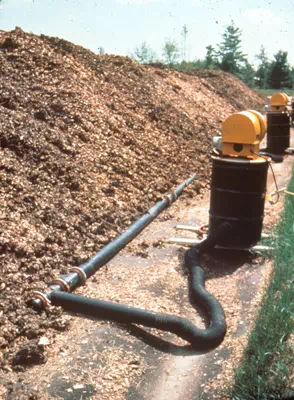How Do Vet Clinics Dispose Of Dead Animals
Carcass Disposal Information
This section of VetCA provides links to various resource pertaining to beast carcass disposal.
Appropriate Animal Carcass Disposal
The AVMA advocates safe and environmentally responsible disposal of animal carcasses, whether on an individual brute footing or during mass mortality events. As such, the AVMA supports increased research and pedagogy towards the development of appropriate methods and guidelines for animal carcass disposal. (As well see AVMA's policy on Creature Carcass Take a chance in Natural Disasters.)
Domestic Animals - Companion and Product Animals
A diverseness of authorized disposal ways exists for carcasses of domestic animals, regardless if they are considered companion or production animals. Advances on many fronts take expanded carcass disposal techniques; still, the applicability, costs, and risk mitigations of each are important considerations when choosing from the authorized and available disposal means in your area. Additionally, increased restrictions upon carcass disposal, such equally those pertaining to specified risk materials (SRMS) in cattle 30 months of age and older, accept greatly impacted sectors of animal owners, resulting in even greater need for improved availability of practical carcass disposal options.
While cremation or burial are the virtually common ways of final disposition for pocket-sized companion animals, these options may not be practical or possible for all animal carcasses.
- Some municipalities prohibit burial of animals within their boundaries.
- Weather, environmental, or soil conditions may not be conducive to burial even if information technology is authorized in the desired location.
- Prevention of secondary toxicoses of scavengers and pollution of ground water are extremely important considerations when debating burial carcasses of animals which were pharmaceutically euthanized.
- Cremation costs are generally based on the weight of the carcass(es), and is often cost prohibitive with larger animals.
- When done appropriately, composting provides an environmentally friendly ways to dispose of carcasses and eliminate a variety of pathogens.
The following useful spider web sites and university sources of information on carcass disposal are provided here to assist veterinarians and their staff in providing accurate and useful guidance to their clients (as well every bit for utilise in their own practices) regarding carcass disposal.
- Natural Rendering: Composting Livestock Mortality and Butcher Waste product
- "Euthanatized animals tin can poison wildlife: Veterinarians receive fines," JAVMA 2002
- Managing Contaminated Beast and Constitute Materials: Field Guide on All-time Practices - National Center for Foreign Animal and Zoonotic Affliction Defense (provides thorough summaries of disposal methods, including regulatory aspects, planning, procedures, safety, biosecurity, environmental impact and cost)
Cornell Waste matter Management Found (CWMI).
- Farm Waste Management. A program in the Department of Crop and Soil Sciences in the Higher of Agronomics and Life Sciences at Cornell Academy. Topics of involvement include composting and rendering of subcontract animals.
Michigan Land Academy
- Best environmental management practices farm animal production mortality management.
Penn State University
- Resources on composting and natural rendering
Due south Texas State University
- Carcass Disposal Issues in Recent Disasters, Accepted Methods and Suggested Programme to Mitigate Future Events. Contains eight capacity on the logistics of the disposal of beast carcasses created by numerous disasters.
Virginia Tech
- Composting dead poultry
Wild fauna
State Regulations. About states accept enacted regulations governing the disposal of wild animal carcasses. These rules are in place to protect humans and animals from the spread of infectious and/or contagious disease. Typically, the agencies involved are the department of natural resources, fish and wildlife, and/or department of wellness. Bank check with your state agencies to determine the applicable regulations.
For proper disposal of wildlife carcasses, consult your state's Fish and Wild fauna Service role.
Cornell Waste product Management Establish (CWMI). A program in the Department of Crop and Soil Sciences in the Higher of Agriculture and Life Sciences at Cornell University. Topics of interest include composting roadkill.
Internet Center for Wildlife Damage Management. A discussion of culling carcass disposal options.
Endangered Species. NCMS maintains a State Endangered Species Tool. It contains useful links to the U.Southward. Fish and Wild animals country contacts, state agency contacts and other useful information.
Baldheaded Eagles or Aureate Eagles. All carcasses, parts, and feathers of these eagles must exist sent to the National Eagle Repository after y'all have satisfied the requirements of your country regulations.
Endangered Or Threatened Migratory Birds. Approval from your local Fish and Wild animals Office is required prior to disposing of or transferring any carcasses, parts, or feathers of endangered or threatened migratory birds.
Source: https://www.vetca.org/lacd/carcassdisposalinfo.php
Posted by: stewartadvigul.blogspot.com

0 Response to "How Do Vet Clinics Dispose Of Dead Animals"
Post a Comment